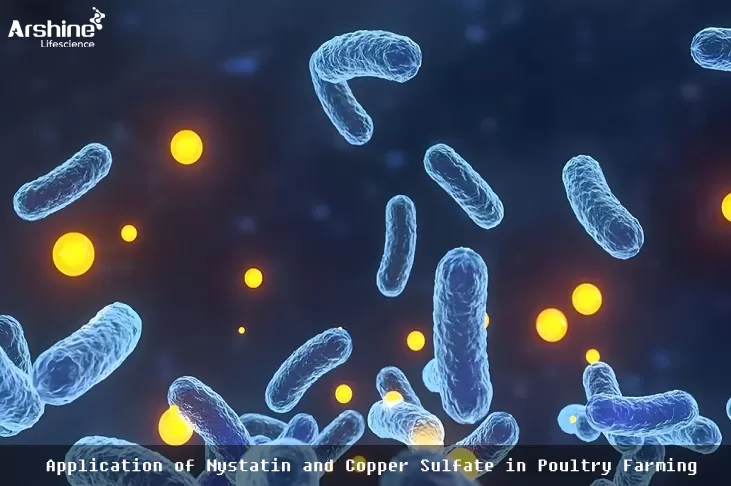

The presence of molds and mycotoxins in feed ingredients and feed has brought non-negligible impacts to the livestock and poultry industry. However, the hazards of improper selection and use of mold removers are likely beyond the imagination of most breeders and product users.
First, there is no standard to evaluate mold removers: Measuring the adsorption rate of mycotoxins has always been a global challenge, similar to the difficulties in testing feed energy. To control mold-related diseases in feed, methods such as adsorption, degradation, detoxification, metabolic promotion, mold inhibition, and antifungal drugs have become indispensable additives in healthy breeding practices. Among the many methods to combat mold and its related issues, only mold inhibition and antifungal action provide the most direct effects.
In contrast, methods like adsorption, degradation, metabolic promotion, enhanced detoxification, and immunity boosting are indirect approaches to dealing with mold risks or mold-related problems. Therefore, in livestock and poultry production, people tend to prefer drugs that act directly on molds, such as copper sulfate and nystatin. As a result, these two ingredients are the most well-known in the industry.
Nystatin is a polyene antibiotic produced by Streptomyces noursei. Its main functions include:
Bacteriostatic or bactericidal effects: Nystatin can inhibit or kill fungi such as Candida albicans, Cryptococcus neoformans, Histoplasma capsulatum, Coccidioides spp., and Microsporum spp.
Treatment of intestinal fungal infections: Due to its poor oral absorption, high toxicity via IV or IM injection, and lack of absorption through skin or mucous membranes, it is ineffective against systemic fungal infections. However, nystatin can be used to prevent or treat intestinal fungal infections caused by long-term use of tetracycline antibiotics.
Treatment of digestive tract candidiasis: Clinically, it can be used to treat gastrointestinal candidiasis in dogs and cats.
Topical treatment for skin fungal infections: Topical application is effective against skin fungal infections. In poultry, it is used to treat mycotic proventriculitis and gizzard infections, with years of application feedback showing significant efficacy.
Dosage and Administration:
Oral daily dose:
Horses & cattle: 2.5–5 million units
Pigs & sheep: 0.5–1 million units
Dogs: 100,000–200,000 units
Administered 3–4 times daily.
For poultry: Generally 500,000 units per 500g of feed.
Since it is insoluble in water, it can only be mixed into feed. If a nystatin product claims to be water-soluble, it is undoubtedly counterfeit!
Preventing molds and fungi
The blue particles previously seen in feed were copper sulfate (also called blue vitriol), which effectively prevents feed mold while promoting growth and reducing feed conversion ratio.
When chickens suffer from favus, copper sulfate can be dissolved in warm water and sprayed on the comb at night (when chickens rest) for effective prevention and treatment.
Astringent, hemostatic, and anti-inflammatory effects
Appropriate amounts of copper sulfate can constrict capillaries, separate necrotic intestinal mucosa from healthy tissue, and thus exert anti-inflammatory and astringent effects.
If necrotic enteritis caused by mold occurs in late-stage broilers, copper sulfate in drinking water can enhance treatment efficacy.
Debridement and tissue regeneration
Copper sulfate has corrosive properties that remove necrotic tissue and promote new tissue growth. It also kills fungi such as Aspergillus flavus, making it effective in treating proventriculitis and gizzard erosion in chickens.
Additionally, copper sulfate can be used for disinfecting poultry houses and breeding grounds, effectively reducing mold proliferation.
Although many people are familiar with these two drugs, very few understand their differences in combating mold and treating mold-related diseases. Some common misunderstandings include:
Effective but treatment costs are too high.
Low cost but ineffective treatment.
Effective and low-cost but prone to toxicity.
This stems from a lack of understanding of how nystatin and copper sulfate differ in treating mold diseases. Each drug has its unique mechanism and characteristics, meaning each has its optimal application scenario—no single antifungal drug is universally effective against all mold diseases!
For example:
Nystatin is insoluble in water and poorly absorbed in large animals. If water administration is needed, copper sulfate is more suitable because it dissolves easily in water.
If combating systemic fungal infections (e.g., in chicks), absorbable nystatin is the first choice. Using copper sulfate in such cases would only affect molds in the digestive tract.
Add: Block 14, No.100, Luyun Road, Changsha 410205, Hunan, China.
Email: info@arshinevet.com
WeChat: +8618874001228
WhatsApp: +8615697311407
Tel:86-731-82294958